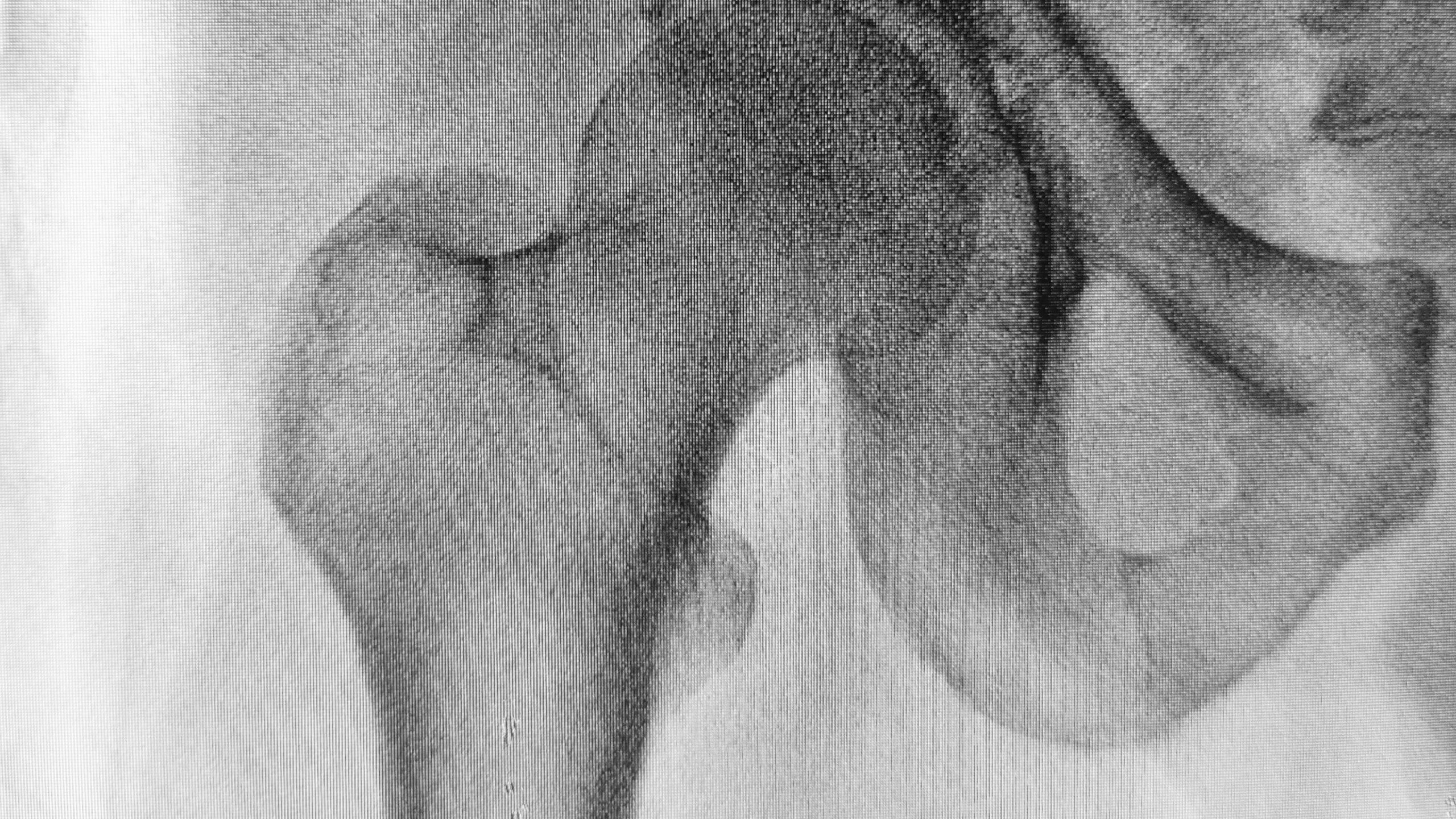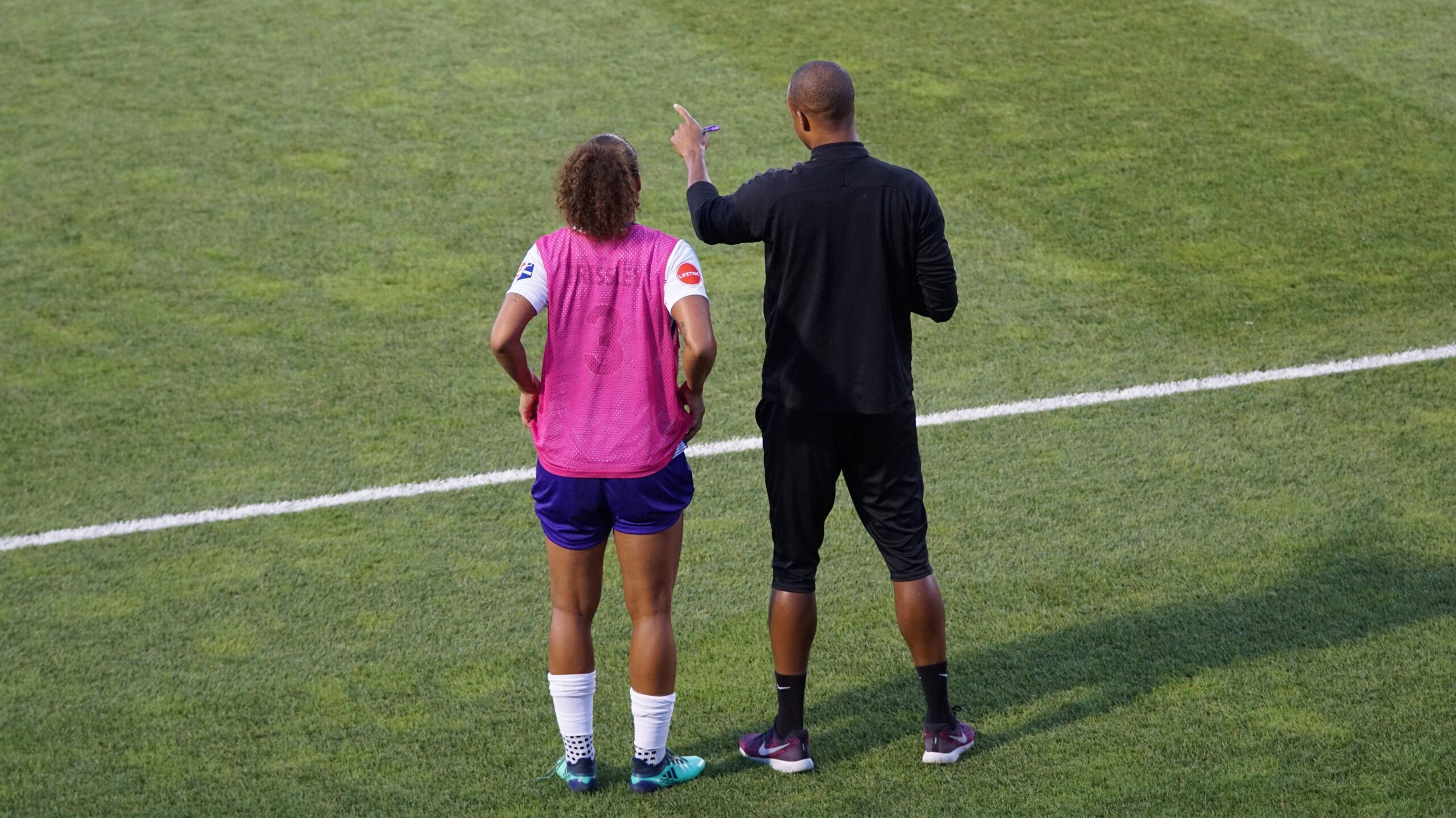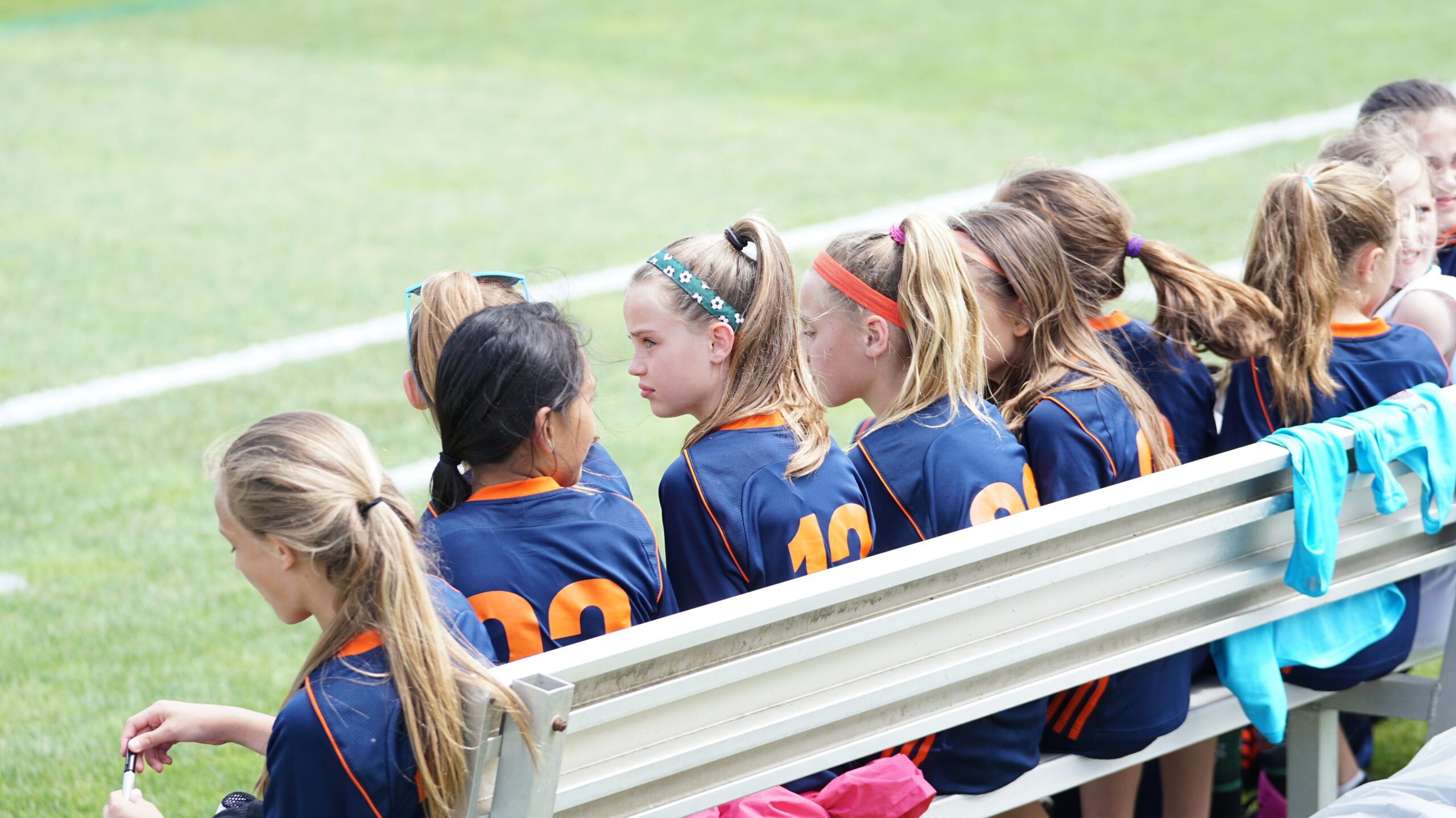News Team member Caroline Hansen reports that hospital closures across the United States threaten equitable healthcare access for rural populations and demand solutions.
RED-S: The Little-Known Condition Harming Amateur and Pro Athletes
Pressure to perform and be lean creates “Relative Energy Deficiency in Sport” and undermines metabolism and bone strength
By Annika Urban
Samantha Luciani was diagnosed with osteoporosis at the age of 15. Osteoporosis, a condition in which a person’s bones become weak and brittle, can mean that a fall, bending over, or even just coughing can cause broken bones. But most doctors don’t recommend screening for osteoporosis until they’re over the age of 65.
“I was very into cross country and running when I was in high school. But I just would not stop getting injured,” Luciani says. “I had eight or nine stress fractures in a three-year period. In hindsight, I had pretty severe anorexia at the time, but I was not ready to know that.”
She was an avid runner, and stress fractures are a common running injury. But not this common.
The explanation of Luciani’s injuries isn’t simple. Unlike a regular fracture, stress fractures develop over time. Athletes often dismiss stress fracture pain as some other muscle or ligament pain until the bone is nearly broken. This makes it difficult to pinpoint an exact cause or even timeline of the injury.
One incredibly important concept called “relative energy deficiency in sport,” or RED-S, can help all athletes, especially female runners like Luciani, explain why something like this might happen.

The little-known condition that explains an array of athletic injuries
RED-S is a concept that explains a variety of symptoms related to declining athletic performance: poor bone health, weakened immune system, loss of menstrual function, gastrointestinal issues, psychological issues, and more. The general idea is that if athletes don’t consume the amount of energy that they need to replace the amount of energy they use while exercising, a host of adverse health effects may occur.
Braeden Charlton, a researcher at Vrije Universiteit in Amsterdam, explains the concept of “energy availability” as it relates to energy deficiency. “Your fat-free mass, which is mostly your muscle and bone, requires a certain amount of calories to be able to maintain just physiological functioning.”
But, he says, if you’re over-fueling and consuming more calories than your body needs, you’ll put on fat, also known as adipose tissue. On the other end of the spectrum is under-fueling. “You can think of energy availability as an inverted U-shape, where you have your peak performance somewhere in the middle where you’re not over-fueling to the point where you’re putting on a lot of extra either adipose or under-fueling.”
One more well-known and related concept is the “Female Athlete Triad.” As physicians Julie Hobart and Douglas Smucker defined the framework in the American Family Physician Journal in 2000, The Female Athlete Triad describes a combination of three conditions: disordered eating, amenorrhea and osteoporosis, each of which are associated with athletics.
An athlete experiencing the female athlete triad might have low bone density, not get a regular period or be prone to stress fractures, and also experience disordered eating – whether as a diagnosed eating disorder like anorexia nervosa or more subtle eating patterns.
The Female Athlete Triad is an incredibly useful concept in explaining the condition that affects female athletes. However, in 2014, the International Olympic Committee released a consensus statement that introduced the term RED-S as a more comprehensive term for a concept similar to the Female Athlete Triad. RED-S describes that the condition involves more complexity and affects male athletes as well.
RED-S, according to the statement, includes a variety of symptoms: “metabolic rate, menstrual function, bone health, immunity, protein synthesis, cardiovascular health caused by relative energy deficiency.” The cause of these health changes, they explain, is “energy deficiency relative to the balance between dietary energy intake and energy expenditure required for health and activities of daily living, growth and sporting activities.”
“The female athlete triad started off as the presentation of just three symptoms that was purely seen in female athletes,” says Charlton.
“RED-S is just a more inclusive term, because they have discovered that there’s not just those symptoms, there’s a multitude of other ones. And it doesn’t just happen to female athletes, it can happen to male athletes, recreational exercisers, or anybody who’s in what we call an energy deficiency state. An ‘energy deficient state’ is just where your caloric output far exceeds what your caloric input is.”
Simply put, energy deficiency is when the energy requirements of a person’s daily activities and athletics are greater than the energy that a person is able to consume through food. In addition to the physical symptoms, psychological consequences can also occur. Overall, the difference between the Female Athlete Triad and RED-S is that RED-S affects many aspects of health and athletic performance for people of all genders.

In diagnosing RED-S, it’s important to differentiate between signs and symptoms, Charlton says, drawing on the medical distinction that a sign is something measured objectively, whereas a symptom is experienced. For example, while feeling body aches might be a symptom of illness, a fever is a measurable sign that a doctor might measure.
“In terms of RED-S, there are so many different signs, and everybody presents that a little differently and is able to hide things a little more. The top things to go are things like bony stress injuries, chronic illness, muscle tearing, repeated injuries, or illnesses. On the other side, there’s some that are quite subtle, like depression, that might be a little harder to see, but does pop up quite frequently in anybody that’s in a lower energy state,” says Charlton
At the surface, Luciani’s combination of symptoms could have been called a prime example of the female athlete triad. But it’s important to note that her symptoms, as well as those of many other athletes, were not limited to those within the Female Athlete Triad, explaining the need for the broader concept of RED-S.
What RED-S feels like
In hindsight, Luciani knows that she had severe anorexia, but says she “was not ready to know that.” For her, the running community and culture was “a magical, wonderful place,” but had “insidious sneaky aspects,” that allowed her to hide her eating disorder behind the identity of an athlete.
“Having been on the cross country team and having been steeped in running culture and in the running community, was just such a magical, wonderful place. But then you also see these insidious, sneaky aspects.”
She notes that many people with RED-S may not have an underlying mental illness, and may be experiencing energy deficiency due to a lack of knowledge or awareness. However, she says that within the running community, “there’s a lot of toxic messaging regarding body size and body image and maintaining a period for folks who have uteruses.” Within the running community, it’s a prevalent idea that irregular periods are seen as a sign of being a “true athlete,” while it is actually a sign of a significant health problem and energy deficiency. In fact, getting your period regularly can be seen by some athletes as a sign of “not training hard enough.”
After being diagnosed with RED-S, athletes have to carefully consider their return to sport and take time to recover just like they would with any other injury. The IOC Consensus Statement on RED-S update from 2018 notes that more research is needed in the area of return-to-sport for athletes diagnosed with RED-S. While they note that athletes with eating disorders can oftentimes be helped by leveraging participation in sports, this may not be the healthiest long-term option.
In Luciani’s case, truly recovering from her illness and injuries required therapy and mandated time off from running. However, it’s also important to consider how we can reduce the prevalence of RED-S and prevent athletes from developing mental illnesses and eating disorders. Some of the potential for impact in these areas stems from coaches.
And recovery from injuries caused by RED-S like Luciani’s stress fractures involve months of time off from running, walking boots, crutches, and then very slow returns to running. With each of these injuries, athletes’ mental health declines. Injuries can cause excess stress, as well as prevent athletes from playing their sport – which can be a mediator of mental health issues.
According to one study published in the British Journal of Sports Medicine in 2016, “The psychological response to injury can trigger and/or unmask mental health issues including depression and suicidal ideation, anxiety, disordered eating, and substance use/abuse.” Studies have shown that injured athletes experience depression, anxiety and other mental health disorders more than uninjured athletes. Avoiding injury is imperative for athletes.
The importance of educating coaches
For most athletes, the single person who is most involved in their training and recovery is their coach. Coaches oftentimes work with teams of medical professionals – athletic trainers, nutritionists, physical therapists and even therapists or sports psychologists. But, the main point of daily contact and source of athletic and health-related information for an athlete is their coach. Because of this, coaches play an important role in educating athletes about RED-S, monitoring them for symptoms, and continuing conversations about energy needs and injury.
Unfortunately, coaches are oftentimes either under-educated about RED-S or do not have continued conversations with their athletes about the importance of energy availability. One study published in 2016 in the Journal of Sports Medicine and Physical Fitness surveyed more than 300 NCAA Division 1 coaches of female athletes across a variety of sports. The survey aimed to assess two things: 1) coaches’ knowledge of the Female Athlete Triad, and 2) the coach’s confidence in their own knowledge. Researchers then assessed these results in conjunction with information about the coach themselves, including gender, education, years of experience, and whether they’ve received continued education about the Female Athlete Triad.

The study found that coaches of “low body weight” sports, or sports that often emphasize the weight of the athlete as being related to their performance (including cross country and rowing) were significantly more knowledgeable and confident in their answers.
Interestingly, the study did not find any difference in knowledge or confidence that correlated with the gender of the coach, their education level or years of experience. Jillian Frideres, the lead author on the study and an adjunct instructor in the Health, Kinesiology and Sport Management Department at University of Wisconsin – Parkside, noted that it is possible that they didn’t see an effect of gender on coaches’ knowledge of the Female Athlete triad because of something called “response bias.”
“We know from previous research that people are oftentimes more likely to respond to surveys when they are more interested in the topic or when they are involved/invested in the survey topic. So, this may have influenced our data. Male coaches that are interested in the topic or place more importance on it may be the ones who responded to our survey and may further be more likely to provide information to their athletes,” says Frideres.
However “it is also possible that there is an increase in awareness about this topic for male coaches due to previous experience as a coach, lack of personal experience, or the presence of informative campaigns.” Frideres says more research would be needed to determine whether there is a correlation between gender and knowledge of RED-S among college coaches.
Finally, coaches who had received particular training about the female athlete triad scored higher on knowledge and confidence ratings than those who did not receive training. These results promote the idea that training for coaches might be a very impactful method of helping athletes struggling with RED-S. However, the connection between knowledge and results – like prevalence of RED-S symptoms within a team – have yet to be studied.
The future of RED-S
Luciani, who is now getting her Ph.D with a focus on health policy and in particular mental health, says that these are the ways we can move forward to reduce the prevalence of RED-S. First, she emphasizes the importance of research. She says there’s “a complete lack of data on eating disorders in particular and also a lack of research on female athletes in general.” She believes it’s important to research athlete behaviors – things that athletes are doing that might be linked to RED-S and eating disorders. And even more importantly to Luciani, research investigating what behaviors are linked to the most severe mental health outcomes.
Along those lines, Luciani believes that we should be researching “how we can develop surveillance tools like survey questions that can really target those behaviors.” Ultimately, she says that policy changes come from research and having “enough power, whether that’s financial power, political power, people power to make a voice heard.” She says that “a lot of the eating disorder research is based on which foundations have the most money.” Overall, “It’s a matter of increasing our understanding by increasing surveillance of these broader eating disorder behaviors, these broader weight management behaviors, body image, dissatisfactions and related things. If we could just add three questions to the three biggest national surveys focused on youth specifically, we could have a much greater understanding, and ultimately, policy focus on addressing weight stigma, eating disorders and RED-S.”
In addition to increased research in the mental health and RED-S space, Luciani says that education is vital to reducing RED-S, improving mental health, and reducing the prevalence of eating disorders among athletes. She notes that oftentimes, teachers and coaches are “first responders” for a female athlete “when she’s first developing her relationship with a sport.” While Luciani was fortunate enough to have a fantastic athletic trainer in high school, someone whose job it is to care for the health of athletes and provides injury support, nutrition advice, and other valuable resources. While Luciani’s athletic trainer effectively monitored and intervened to try to help female athletes, Luciani says “there’s only so much one woman in a massive high school can do.” So education for coaches, even those of elementary-aged female athletes, is vital.
Furthermore, while resources like athletic trainers, team physicians and coaches are all vital in taking care of an athlete’s health, it’s important that these people are all on the same page when it comes to an athlete’s care and in all of the aspects of RED-S. Frideres says that “coordination between coaches and medical professionals is critical and necessary.” For example, a coach should be noticing symptoms that would appear during a practice, while an athletic trainer might be aware of an athlete’s injury history and a team physician could suggest bloodwork or bone density scans.
“When health and wellness issues are promoted and integrated into the environments, routines, and protocols by the various members of the coaching and support staff, everyone gains in the end. Athletes benefit because they work (out) in a better environment and the message received from each staff member is consolidated,” Frideres says.

Luciani founded a project called Lane Nine that is focused on “developing education tools and training tools for those sort of first responders, for female athletes, for the coaches and trainers to help educate.” She says that Lane Nine also hopes to make a safe space for young women growing as athletes to talk candidly about their bodies, getting their period or losing their period, fueling, and more. in addition, Luciani wishes that every female athlete could have “an educated, knowledgeable adult who can help guide them toward valuable and quality resources and give those young girls and women a space to talk about it that feels safe.”
Frideres says that there are two very important aspects to the kind of education that coaches and other adults that are responsible for athletes’ health should have.
“From what I have learned and experienced, continuing education should have two characteristics: involve everyone and connect theory to practice.”
She emphasizes the importance of incorporating everyone’s perspectives in continued education. This idea is sometimes called “stakeholder engagement.” So, when designing continued education prograrms, coaches, nutritionists, team physicians, athletic trainers, and perhaps most importantly, athletes, should all be involved in the process.”
And, Frideres says, “It is important for coaches to be involved in the design of the training, but athletes, too. Both have unique perspectives that must necessarily be reflected in the training.”
Finally, continued education should help coaches connect the “theoretical information” with actionable items – specific strategies, tools, and resources. “Coaches want to help athletes to improve and reduce injuries or other health issues. They will get more involved if they see the benefits of this continuing education,” says Frideres.
For many athletes, RED-S may be something that they become aware of after they’re injured. So injury and illness prevention can be helped by an athlete’s teammates. As a cross country and track athlete myself, I often think about my role as a teammate and how I can positively impact other athletes’ lives. Charlton says that the best way for athletes to support their fellow teammates who may be experiencing any set of RED-S symptoms is “having a positive and open mindset.” He says that this may “help that person to come forward if it gets to the point where the athlete is visibly hurting themselves in that sense.”
But for a high school or college athlete like me, there’s only so much we can do. Charlton says professional help is often necessary. “Then I would definitely say that it is up to either a physician on the team or the coach to kind of step in and give an air of caution – say ‘you might want to maybe go talk to a nutritionist, or you might want to go see the physician.’ Physicians should always, in my mind, be the first line of defense. They are themselves useful resources, and they’re connected to all the other resources that that athlete will need.”
Lucian’s story gave me a sense of deja vu that reminded me how universal the thoughts and experiences of athletes are. While she and I are years apart in age, have never met before, and live thousands of miles away from each other, we’re connected by the experiences of being a runner – from the fears and pressures to the magic of the running community.
